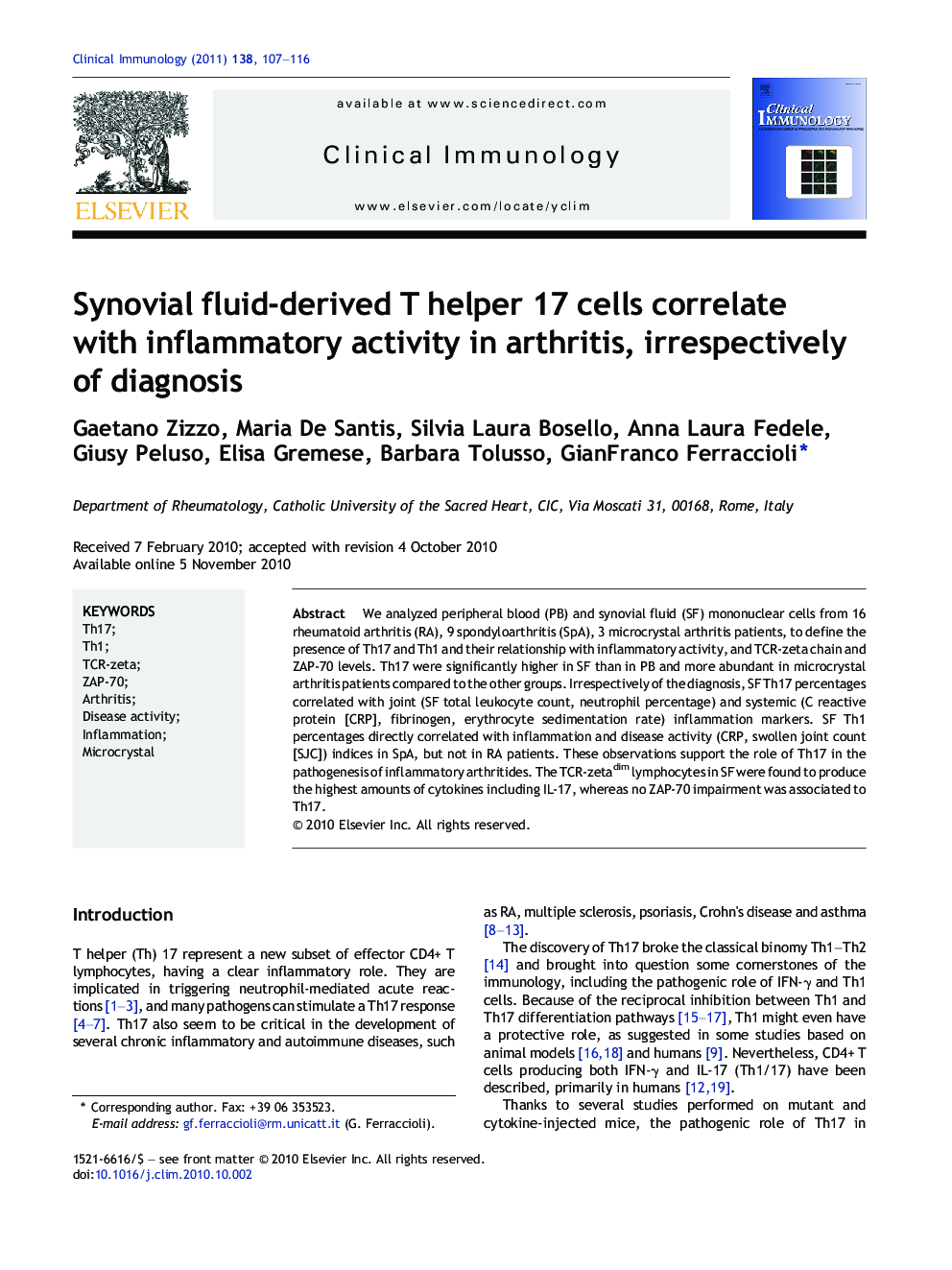| Article ID | Journal | Published Year | Pages | File Type |
|---|---|---|---|---|
| 3257470 | Clinical Immunology | 2011 | 10 Pages |
We analyzed peripheral blood (PB) and synovial fluid (SF) mononuclear cells from 16 rheumatoid arthritis (RA), 9 spondyloarthritis (SpA), 3 microcrystal arthritis patients, to define the presence of Th17 and Th1 and their relationship with inflammatory activity, and TCR-zeta chain and ZAP-70 levels. Th17 were significantly higher in SF than in PB and more abundant in microcrystal arthritis patients compared to the other groups. Irrespectively of the diagnosis, SF Th17 percentages correlated with joint (SF total leukocyte count, neutrophil percentage) and systemic (C reactive protein [CRP], fibrinogen, erythrocyte sedimentation rate) inflammation markers. SF Th1 percentages directly correlated with inflammation and disease activity (CRP, swollen joint count [SJC]) indices in SpA, but not in RA patients. These observations support the role of Th17 in the pathogenesis of inflammatory arthritides. The TCR-zetadim lymphocytes in SF were found to produce the highest amounts of cytokines including IL-17, whereas no ZAP-70 impairment was associated to Th17.
